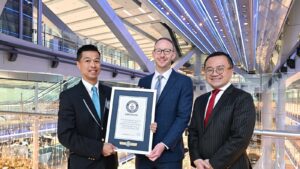Nearly 3 in 4 consumers are not confident they could define what “underwriting” or “permanent life insurance” meant, according to a joint study by LIMRA and Maddock Douglas released at the recent 2014 LIMRA Marketing and Research Conference in Boston.
Further, two-thirds of consumers in the survey were not confident they understood the terms “rider,” “guarantees,” “living benefit” and “annuity.”
As famously stated in the 1967 movie Cool Hand Luke, “what we’ve got here is failure to communicate.” This being the case, it’s no wonder that the study found there are 19 million “stuck shoppers” of life insurance in the U.S. – consumers who believe life insurance is valuable and necessary but have been derailed during the shopping process.
Consumers said one of the biggest obstacles was that they didn’t understand many of the terms used in insurers’ marketing materials. [To view examples, visit: Are We Really Communicating Effectively?]
“Our focus groups consistently described shopping for life insurance and other financial products as confusing, frustrating and overwhelming, which kept them from making a decision on what to buy,” Scott Kallenbach, research director, LIMRA Strategic Research, said in a news release about the study. “The words, images and messages used to explain financial products don’t seem realistic or relatable to many of these consumers.”
Authentic communication, the news release says, is more than just using everyday language and laymen’s terms. It also includes relatable visuals and attainable goals. There are 6 elements that make up authentic communication:
1. Easy to Understand — Language that we use everyday
2. Down to Earth — Images that feel realistic
3. Memorable — Communication that is interesting
4. Positive — Messages that are warm and comforting
5. Credible — Sources of information that are trustworthy
6. Relevant — Communication that says the company understands them, and who they are
“Authentic communication is much more than a revamping of marketing materials and ad campaigns. It is a major innovation opportunity if internalized by the entire culture of an insurance company,” says Maria Ferrante-Schepis, managing principal for Insurance and Financial Services Innovation at Maddock Douglas. “This research uncovers where insurers can improve and builds on work we have done in other areas of insurance, spotlighting the importance of communication in the overall customer experience.”
We want to know what producers in the field think of the communication gap, and what you think could be done to narrow it. A new thread around this topic has been posted on the Forum. Please chime in with your opinion.













